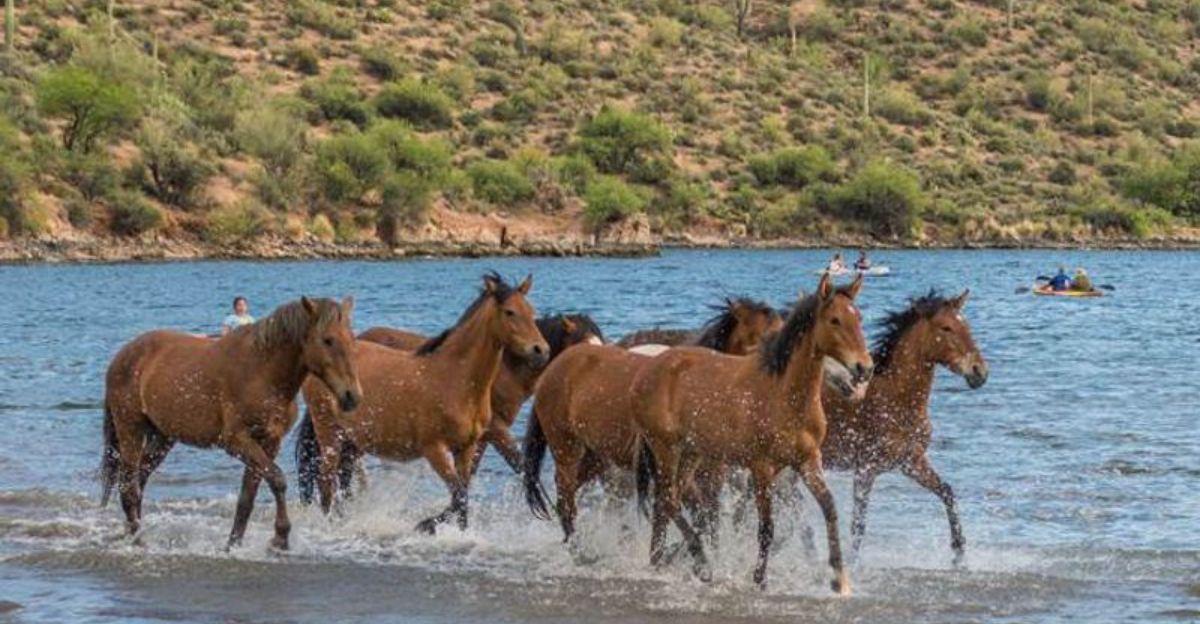When I first visited Arizona’s sun-scorched deserts, I never expected to witness majestic wild horses galloping freely across the landscape.
These magnificent creatures have become inseparable from Arizona’s identity, representing freedom and resilience in harsh conditions.
Their story weaves through centuries of history, conservation battles, and cultural significance that continues to captivate locals and visitors alike.
Spanish Reintroduction And Indigenous Adoption
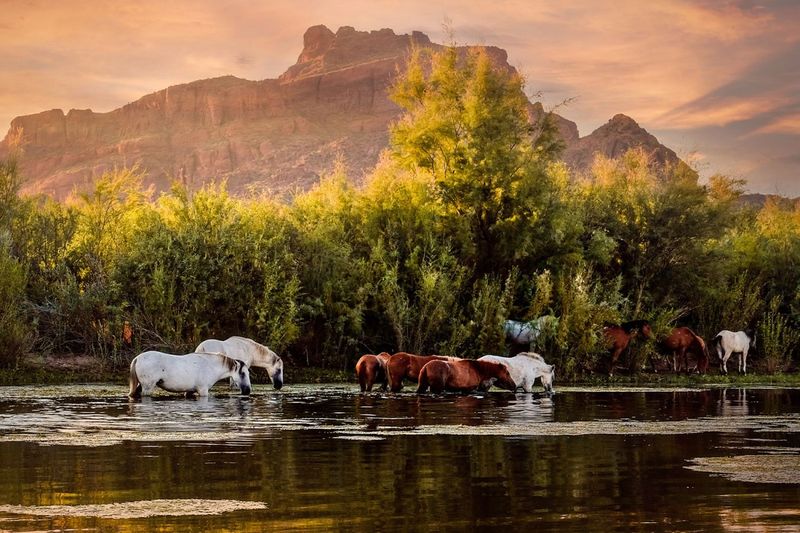
Escaped or abandoned, these European horses gradually established feral populations throughout the Southwest.
Native American tribes, particularly the Navajo and Apache, quickly incorporated horses into their cultures. They transformed from pedestrian societies into skilled equestrians, developing unique horse-keeping traditions that persist today.
The blending of Spanish horses with indigenous stewardship created a distinctly Arizonan symbol: wild yet connected to human history.
Centuries Of Free-Roaming Bands Along The Salt River
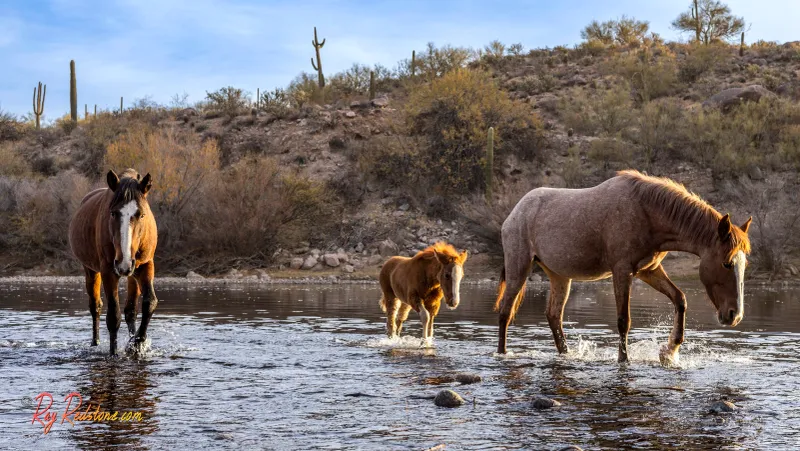
My grandfather used to tell stories about spotting wild horse bands along the Salt River when he was just a boy. These herds have continuously roamed these lands for over 300 years, adapting perfectly to the harsh desert environment.
Generations of Arizonans have grown up witnessing these magnificent creatures drinking at dawn or dusk along the riverbanks.
Their hoofprints in the mud tell stories of survival against all odds: drought, development, and changing landscapes.
Unlike domesticated horses, these animals developed specialized behaviors for finding water and forage in the desert.
High Visibility Near Metro Phoenix Recreation Areas
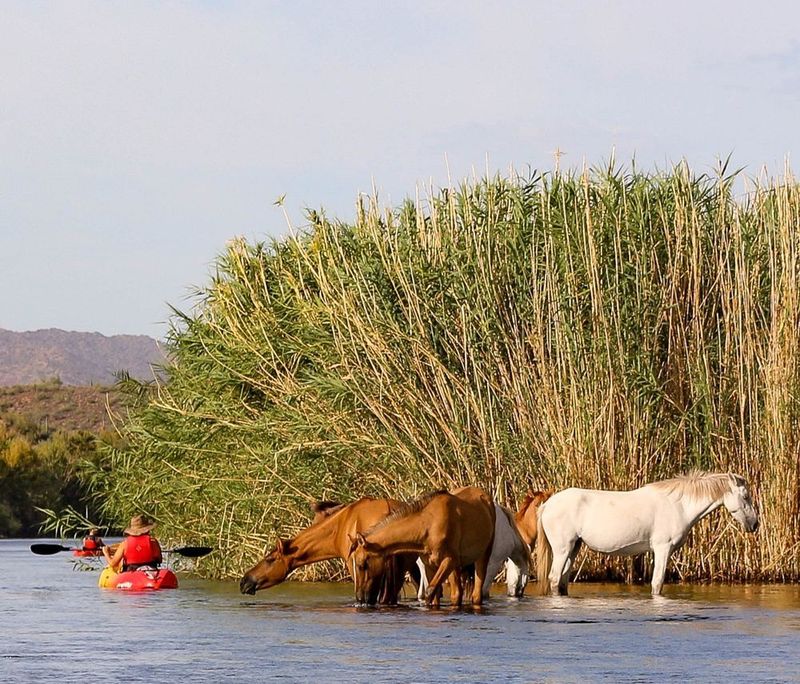
Unlike many wildlife species that avoid human contact, these horses often graze calmly near hiking trails and picnic areas.
Their boldness and beauty against Arizona’s iconic desert backdrop make them perfect photography subjects.
This unusual visibility has transformed them from mere wildlife into living ambassadors for Arizona’s natural heritage, appearing on countless social media posts and vacation photos.
2015 USFS Roundup Attempt And Public Outcry
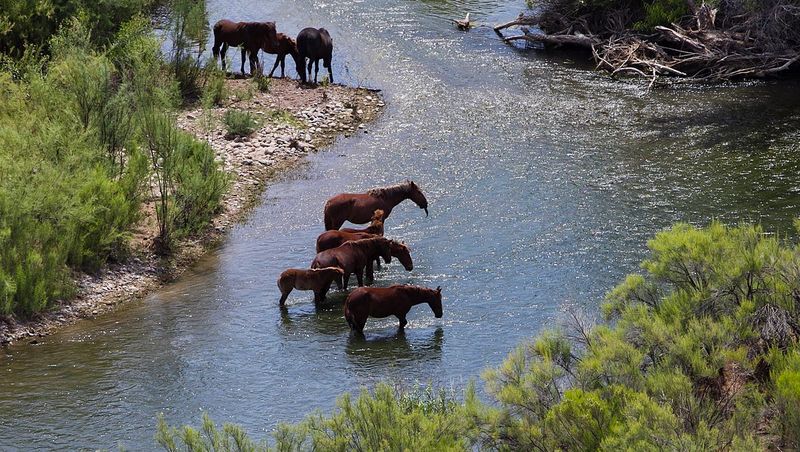
I’ll never forget the community’s reaction when the U.S. Forest Service announced plans to remove Salt River horses in 2015. Suddenly, these animals weren’t just pretty wildlife, they became a cause.
Thousands rallied in protest, flooding government offices with calls and organizing demonstrations along highways. Local news stations broadcast emotional interviews with residents who considered the horses part of their heritage.
Social media campaigns exploded with #SaveTheSaltRiverWildHorses hashtags, gathering over 100,000 signatures on petitions.
This overwhelming public response demonstrated how deeply these horses had embedded themselves in Arizona’s collective identity.
2016 Arizona State Protection (HB 2340)
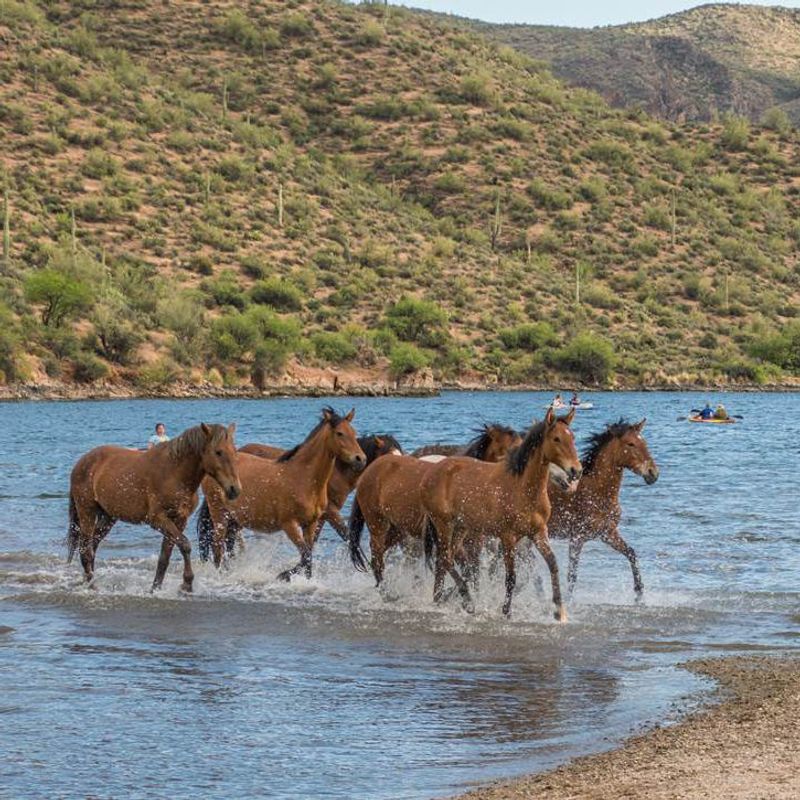
House Bill 2340 wasn’t just legislation. It was Arizona officially embracing wild horses as state treasures.
This groundbreaking law designated Salt River horses as “historic” and “protected,” creating the legal framework for their management.
For the first time, these animals received formal recognition of their cultural significance rather than being classified as feral livestock or unwanted strays.
Few states have enacted specific legislation protecting wild horse populations, making Arizona a pioneer in recognizing equine heritage as worthy of preservation.
Formal Management And Agency–NGO Collaboration
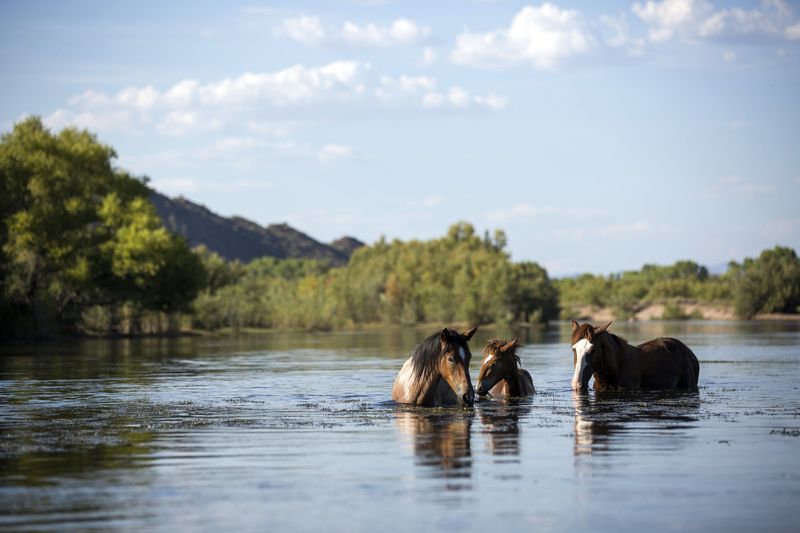
The unprecedented partnership between federal agencies and non-profits like the Salt River Wild Horse Management Group represents a new conservation model.
Rangers and volunteers work side-by-side monitoring herd health, managing population growth, and addressing human-horse conflicts. Their innovative approach balances natural behaviors with necessary interventions.
This collaborative system has become a case study for other regions struggling with wild horse management, showcasing how community involvement creates sustainable solutions that honor both ecological concerns and cultural values.
Tourism, Media, And Photography Promoting The Herds

Wild horse tourism has exploded in recent years.
Local businesses capitalize on the horses’ popularity, selling everything from t-shirts to fine art prints featuring their images. Documentary filmmakers regularly feature Arizona’s wild horses in productions about American wildlife and conservation efforts.
Travel magazines and websites consistently highlight wild horse viewing as a must-do Arizona experience, further cementing their role as living symbols of the state’s untamed spirit.
Ongoing Debate Over Safety, Ecology, And Herd Size
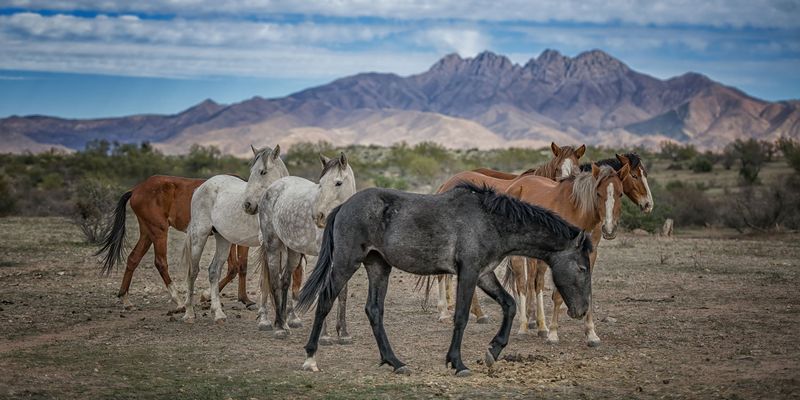
Not everyone sees Arizona’s wild horses as symbols worth preserving.
Ecologists raise concerns about overgrazing and damage to riparian areas, while safety advocates point to road collisions and occasional aggressive behavior. These legitimate concerns balance against the horses’ cultural and historical significance.
Finding middle ground remains challenging as stakeholders negotiate appropriate population levels and management techniques.
This ongoing conversation itself has become emblematic of Arizona’s broader struggles with balancing development, conservation, and heritage.
